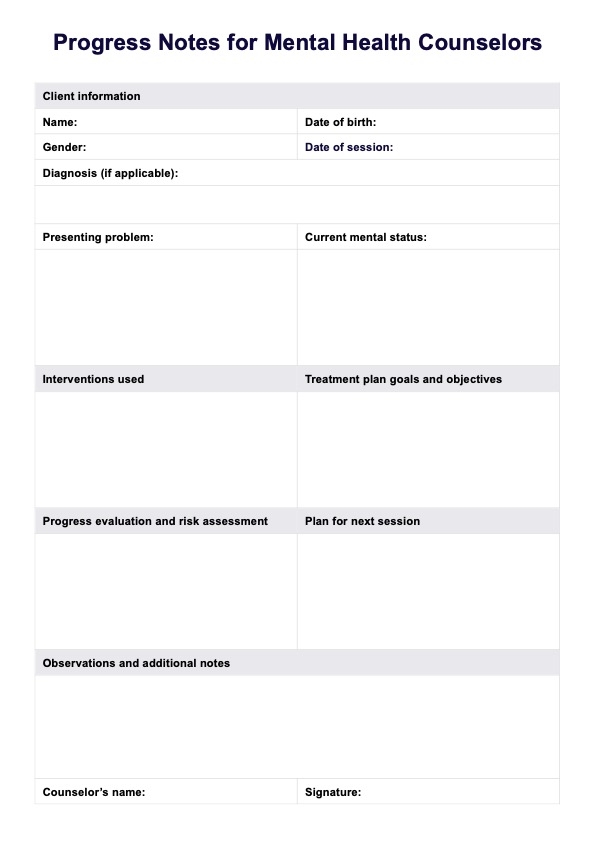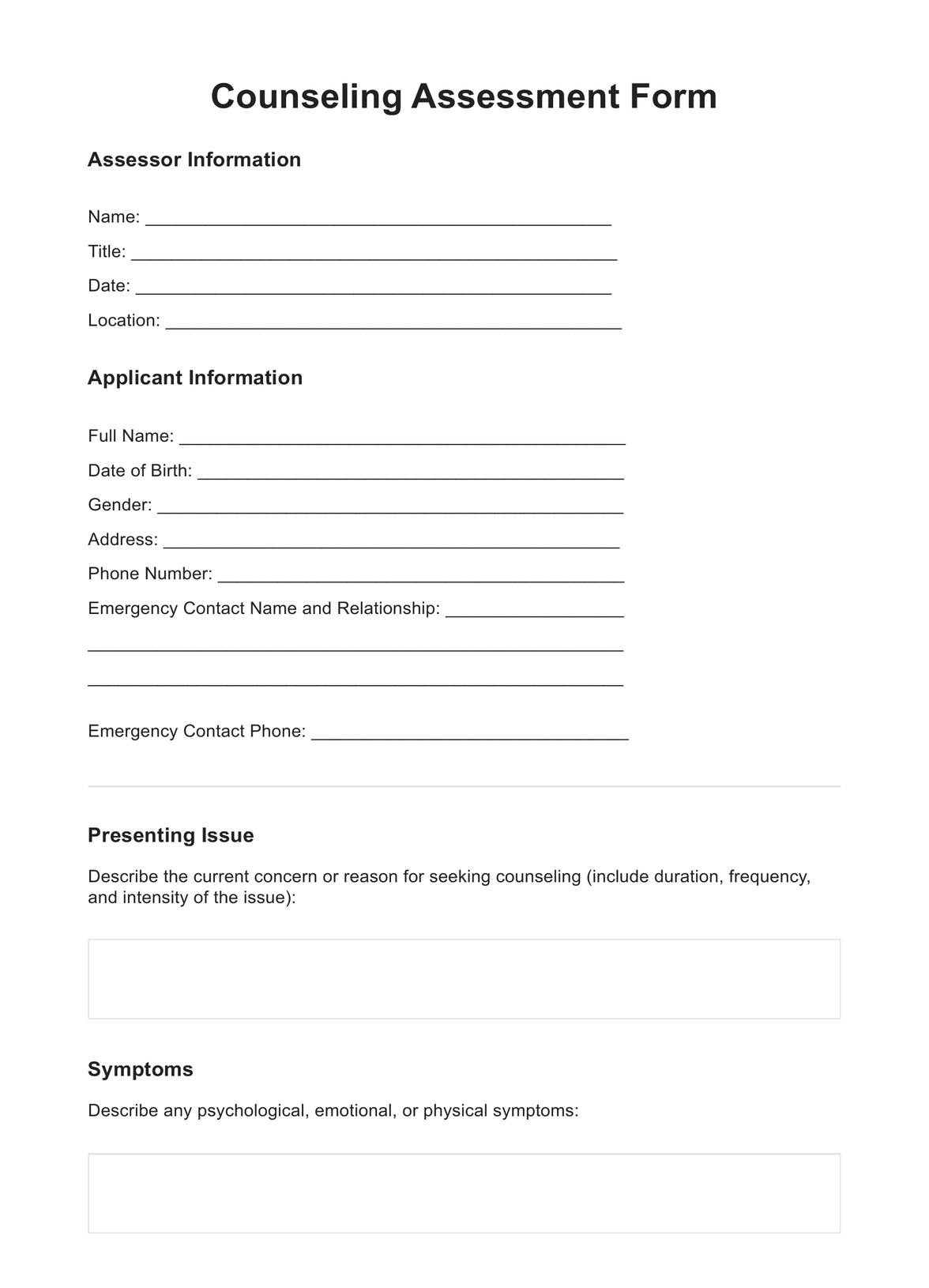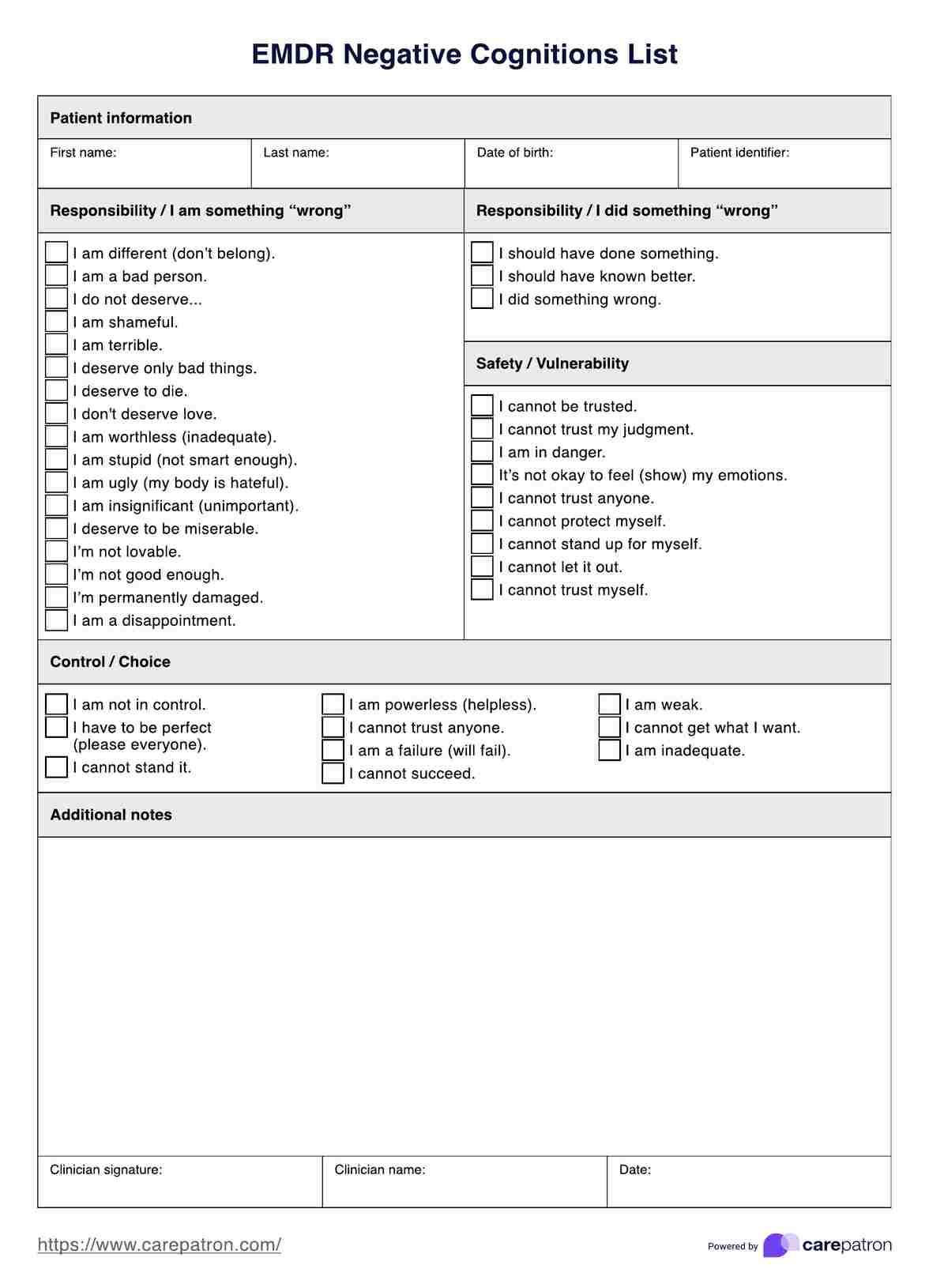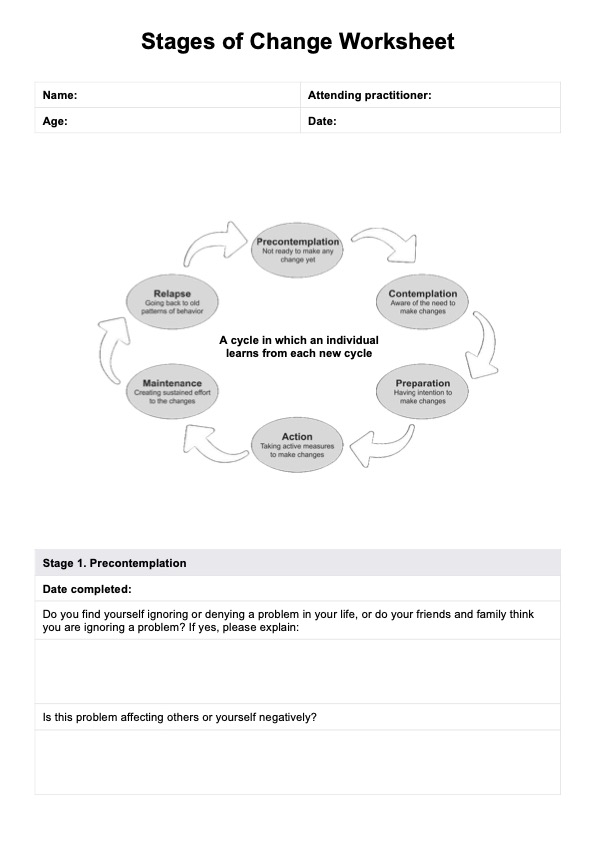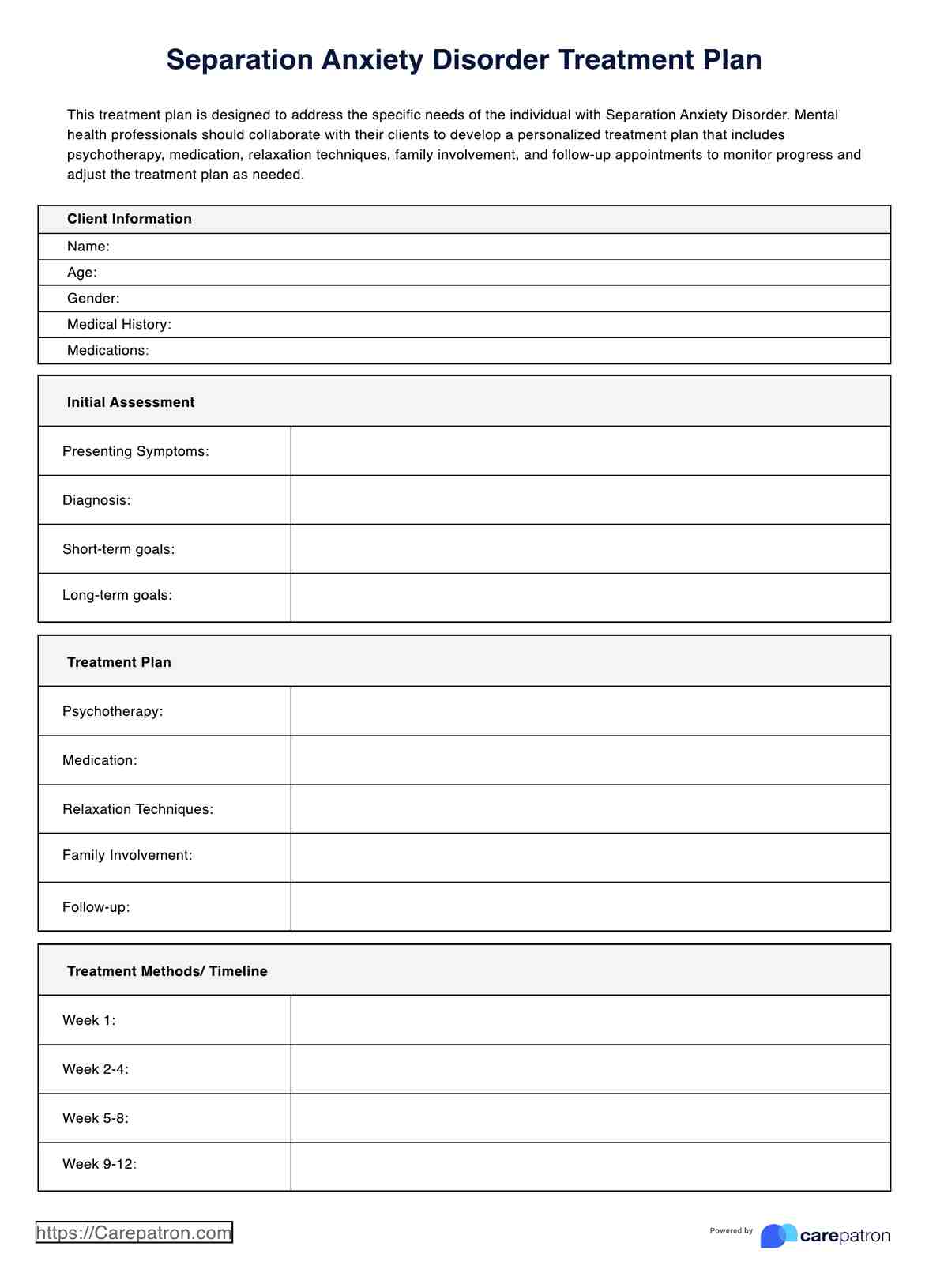Intrusive Thought Diary PTSD Worksheets
Discover how to use the Intrusive Thought Diary PTSD Worksheet for your clients. Access a free PDF template and example now.


What is an Intrusive Thought Diary PTSD Worksheet?
Intrusive thoughts are unwelcome involuntary thoughts, images, or unpleasant ideas that may become an obsession, cause distress, or feel difficult to manage. These thoughts can often be vivid, making the individual feel like they are reliving the traumatic event. Post-traumatic Stress Disorder (PTSD) is a mental health condition triggered by experiencing or witnessing a terrifying event, causing flashbacks, nightmares, severe anxiety, and uncontrollable thoughts related to the event.
One key aspect of managing and treating PTSD is learning to cope with these intrusive thoughts. An can be a helpful tool in understanding the patterns and triggers of these thoughts and developing strategies to manage them. Individuals with PTSD can use this diary to keep track of their thoughts and record any patterns or changes they notice over time.
This worksheet can also help therapists and counselors in their sessions with clients who have PTSD. The diary provides a structured format for clients to record their intrusive thoughts, making identifying triggers and patterns contributing to their symptoms easier. Additionally, mental health professionals can use the information in the diary to guide discussions and develop personalized coping strategies for their clients.
Intrusive Thought Diary PTSD Worksheets Template
Intrusive Thought Diary PTSD Worksheets Example
How to use the Intrusive Thought Diary PTSD Worksheet
Carepatron's free Intrusive Thought Diary PTSD Worksheet can help your clients with PTSD better understand and manage their intrusive thoughts. The worksheet is simple, with clear instructions and prompts to guide individuals. Here's how to get started with the template:
Step One: Access the worksheet
Get a copy of the printable Intrusive Thought Diary PTSD Worksheet using the link on this page. You may also download it from the Carepatron app or our resources library.
Step Two: Explain how it works to your client
Before your client starts using the worksheet, take a few minutes to explain how it works and why it may be beneficial for them. Let them know that this diary is a tool for self-reflection and can help them identify patterns and triggers of their intrusive thoughts.
Step Three: Client records daily thoughts
Encourage your client to record their intrusive thoughts in the diary daily for at least a week. This will provide a good amount of data for analyzing triggers and patterns.
Step Four: Review together
Set aside time in therapy sessions to review the diary together. Use this to discuss any insights or themes that may have emerged and work together on developing coping strategies for managing intrusive thoughts.
Step Five: Continue using the diary
Ask your client to continue using the diary as needed, especially during challenging periods. This will help them stay aware of their thoughts and provide a way to track improvements over time.
When would you use this Intrusive Thought Diary PTSD Worksheet?
You can use our free Intrusive Thought Diary PTSD Worksheet during therapy sessions with clients struggling with PTSD and intrusive thoughts. This may benefit those who have experienced trauma and are looking for ways to manage their ideas in a structured way. You can also utilize the template to:
Identify triggers and patterns of intrusive thoughts
The Intrusive Thought Diary PTSD Worksheet can help clients identify potential triggers and patterns of intrusive thoughts. By tracking the date, time, trigger, and type of thought for each entry, clients may notice common themes or situations that lead to their intrusive thoughts.
Develop coping strategies
You can also use this worksheet to help clients develop coping strategies for managing intrusive thoughts. By asking them to rate the intensity of their thoughts and emotions and identifying the unhelpful thinking styles they may be using, you can guide them toward more effective ways of processing their thoughts.
Help individuals understand their emotional responses
With the Intrusive Thought Diary PTSD Worksheet, clients can delve deeper into their emotional responses to various triggers. This can help them recognize the link between their thoughts and emotions. They can also explore how these thoughts impact their daily lives, including their interactions with others and general well-being.
Foster self-awareness and personal growth
You can also utilize this worksheet to foster self-awareness and promote personal growth. By encouraging clients to reflect on their thoughts, emotions, and behaviors, they may gain more insight into themselves and their reactions. This can lead to developing healthier coping mechanisms and improving overall mental well-being.
What are the benefits of using this Intrusive Thought Diary PTSD Worksheet?
Carepatron's free Intrusive Thought Diary PTSD Worksheet offers the following benefits for you and your clients:
It's fully digital and easy to use
Our worksheet is easily accessible and can be filled out digitally, making it convenient for clients to use on their own time. This also eliminates the need for printing physical copies, reducing paper waste.
It's highly customizable
You can modify the Intrusive Thought Diary PTSD Worksheet to fit your client's needs and preferences. You can add or remove sections, change the format and structure, and tailor it to specific triggers or events.
It promotes open communication
By using this worksheet with your clients, you can encourage open communication about their thoughts and emotions. This can create a safe space for them to share their experiences without feeling judged or stigmatized.
It promotes active participation in therapy
Using this worksheet in therapy sessions encourages clients to take an active role in their healing. This can increase motivation and engagement in therapy, leading to better treatment outcomes.
Commonly asked questions
It depends on each individual, their level of comfort, and how many intrusive thoughts they experience. However, the recommended time frame is 15-20 minutes daily for a week.
You can use this worksheet to help clients manage their intrusive thoughts at any time during your therapy sessions. It can also be used as a tool for clients between sessions.
Mental health professionals, such as therapists and counselors, can use this worksheet with clients struggling with intrusive thoughts related to PTSD. Clients can also use it independently with guidance from a mental health professional.


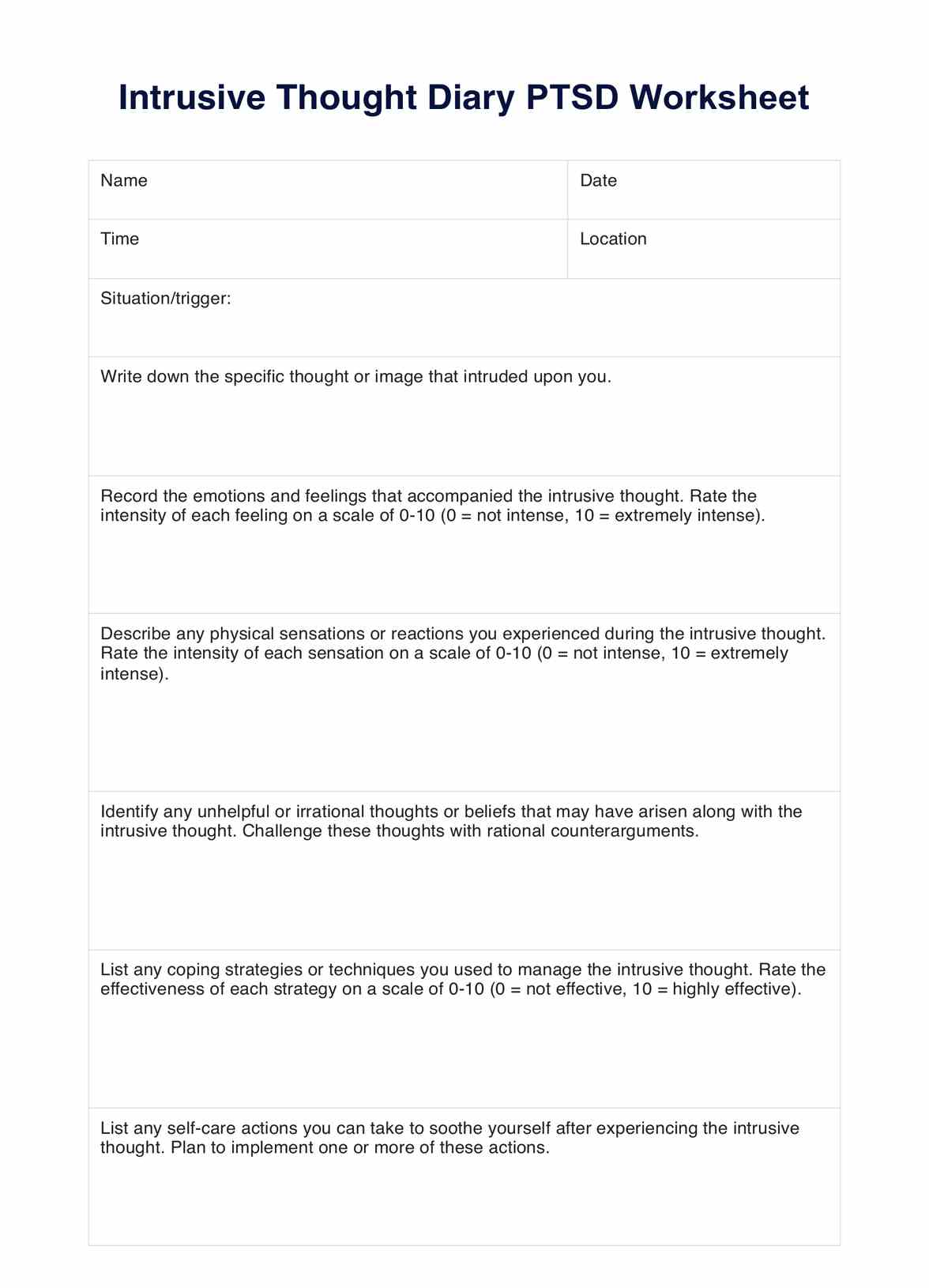
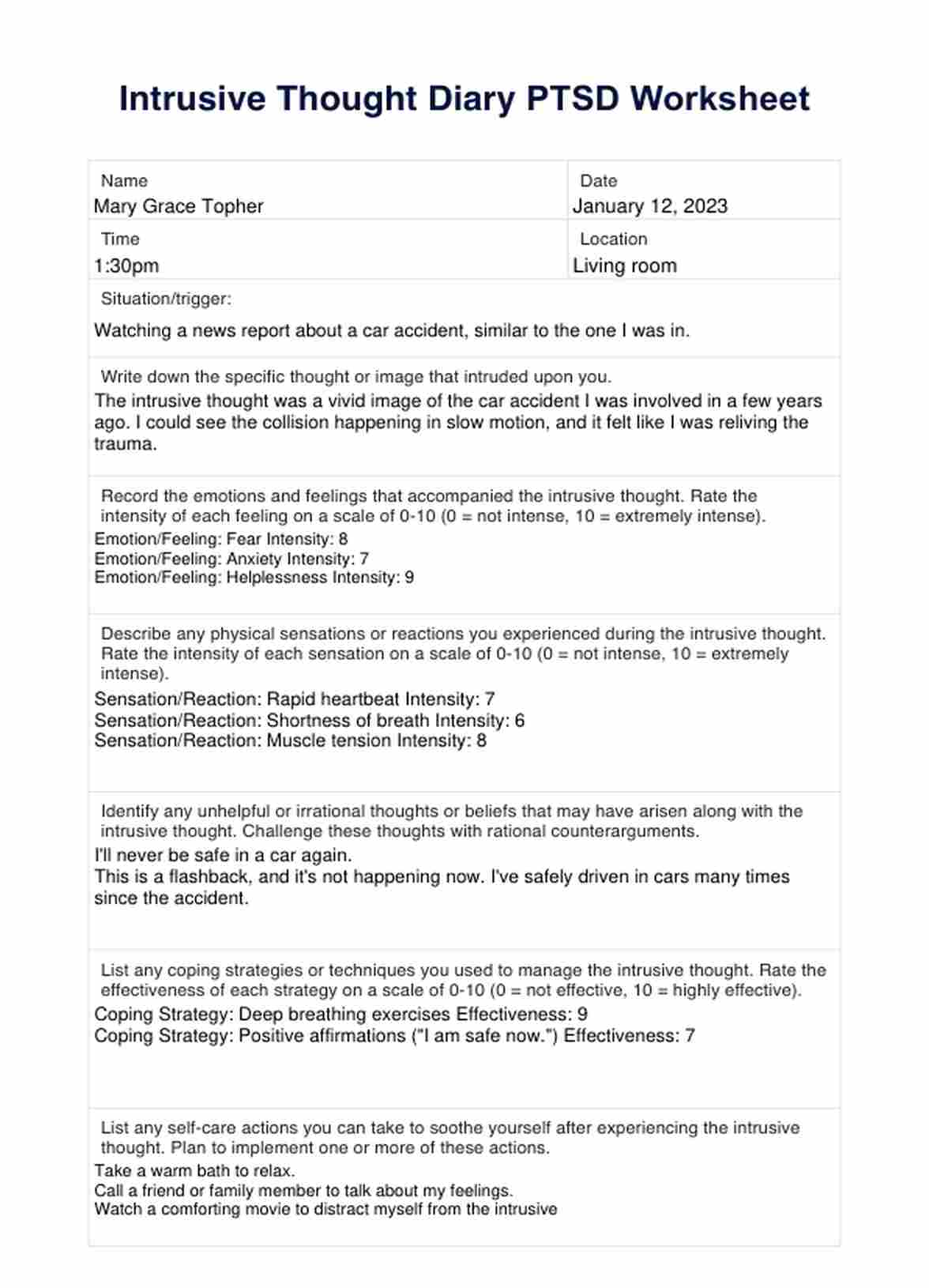

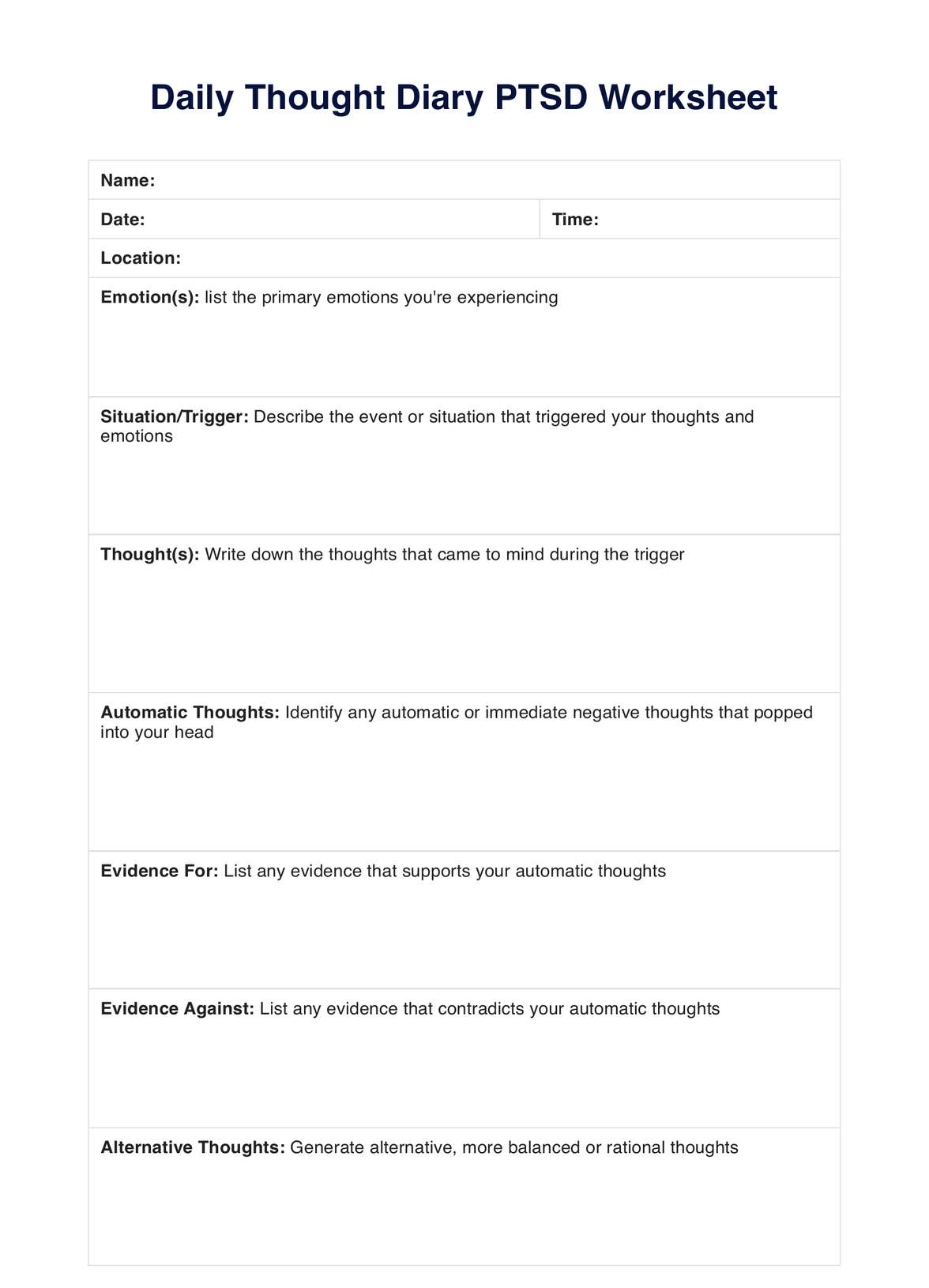















-template.jpg)




















































































